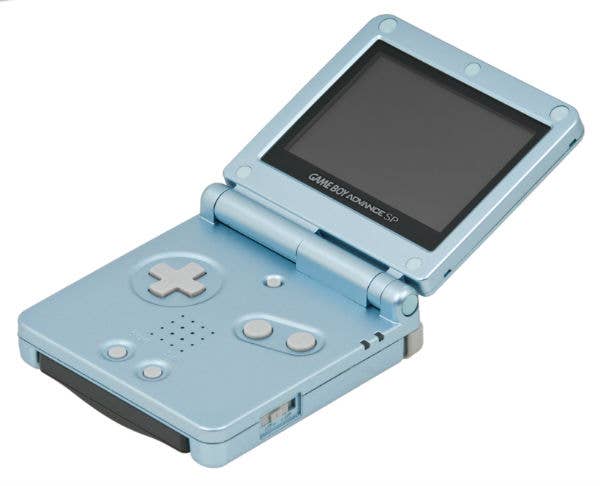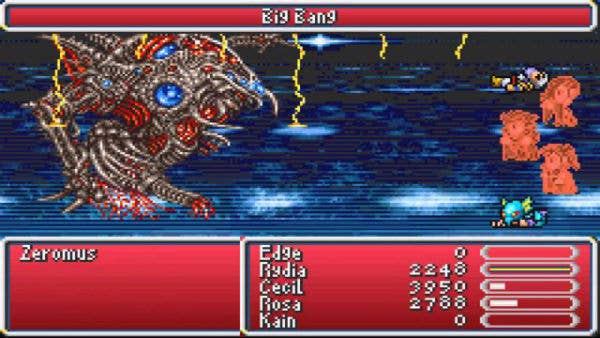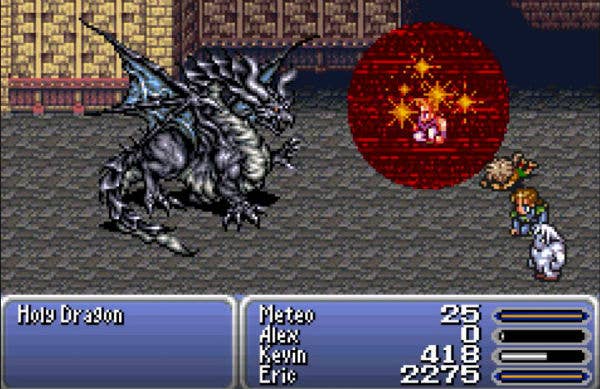How the Game Boy Advance Re-Introduced Americans to the 16-bit Chapters of Final Fantasy
The GBA installments of Final Fantasy IV, V, and VI finally let English-speaking audiences play restored, uncensored versions of the classic RPGs.
This article first appeared on USgamer, a partner publication of VG247. Some content, such as this article, has been migrated to VG247 for posterity after USgamer's closure - but it has not been edited or further vetted by the VG247 team.
Hopefully you've taken time this week to celebrate the 15th anniversary of Nintendo's hit portable system, the Game Boy Advance. There was cake, right? And balloons, and speeches, and the rest of it?
Well, if you weren't able to wrangle any of that, maybe you at least had a chance to reflect on what the Game Boy Advance did for fans of portable gaming, and what it did for the industry in general.
Though the Game Boy Advance is technically more powerful than the SNES, developers exported a number of classic 16-bit games to the stout little system. Most of those titles offered new features (and severely diminished sound quality thanks to the major differences between the devices' sound chips) and gave us a chance to legally re-experience our 16-bit favorites in an era when Nintendo's eShop was still miles away.

In fact, some these repeat journeys held special significance for North Americans. Specifically, Square-Enix re-visited three of its key 16-bit titles on the Game Boy Advance -- Final Fantasy IV, Final Fantasy V, and Final Fantasy VI -- and for many of us, it was our first opportunity to play uncut versions of the RPGs that shaped our childhoods.
Final Fantasy IV first came to North American SNES's as Final Fantasy II in 1991. It was an RPG masterpiece then, and it still is, but missing out on the actual Final Fantasy II as well as Final Fantasy III for the Famicom made Final Fantasy IV seem like that much more of a leap for North Americans.
Despite the game's cultural significance, complexity, and still-beloved character roster, the premiere English version of Final Fantasy IV suffers under a number of cuts. The translation is atrocious (visit Legends of Localization for a breakdown of the "why" and "how" behind the process), and certain items are dummied out to presumably keep players outside of Japan from getting confused. 1992's Final Fantasy: Mystic Quest (released in Japan as Final Fantasy USA) is unofficially subtitled "Baby American's First RPG," so it's easy to understand why Japan thought to simplify Final Fantasy IV SNES by amalgamating healing items, cutting characters' abilities, and toning down the difficulty.

A more true-to-form version of Final Fantasy IV came to North America through Final Fantasy Chronicles, released on the PlayStation in 2001. The port is shoddy, however. Load times are long, and even though the re-translation seemingly restores mature content cut from the first SNES version of Final Fantasy IV, a visit to the above-linked Legends of Localization archive reveals the localization is highly inaccurate at times.
So it can be argued that North Americans didn't get to play Final Fantasy IV in its rawest form until Final Fantasy IV Advance came to the Game Boy Advance in 2005. Its translation hews close to the original Japanese text, but has enough flavor to keep it from being too dry. All the items and weapons missing from the original Japanese iteration of the game have been restored. Best of all, there are unique additions, like post-game dungeons that offer tough boss fights, killer weapons, and even expand on the characters' personalities and stories (Kain's challenge reveals a lot about the moody dragoon).
Final Fantasy V Advance, which came to North American Game Boy Advance systems in 2006, is an important release. The original Final Fantasy V for the Super Famicom never came to the SNES (though some of us surely remember downloading the ROM and fan translation patch over our 56k modems), and the version included on 1999's Final Fantasy Anthology disc for the PlayStation is a joke. Its translation is so slap-dash, so feeble, that the "wyvern" enemy became "Y Burn." Never forget.

Final Fantasy Anthology proved elusive anyway, so again, it was the Game Boy Advance that filled in this major chapter of Final Fantasy history for North Americans. Like Final Fantasy IV Advance, it features a crisp translation, updated graphics, optional super-bosses, and extra dungeons.
2007's Final Fantasy VI Advance is probably the series' most interesting Game Boy Advance re-release. Final Fantasy VI (released for the SNES in 1994 as Final Fantasy III) is a special game because it successfully relays a very deep and serious story despite Nintendo of America's restrictions on certain content at the time. Ted Woolsey takes much of the credit here: He delivered unto us an historic plot about death and the apocalypse despite the fact he was forbidden to use the word "die." That's nutty.
Despite Woolsey's wizardry, it quickly became obvious the SNES release of Final Fantasy VI is missing chunks of content. The current wars being fought over censorship, localization, and Nintendo's policies aren't new: They were hot and vicious as far back as the late '90s, when people first entered online fandom in earnest. The only difference is people spat venom at Nintendo from Usenet groups and hastily-constructed Geocities pages instead of social media.

But Final Fantasy VI's axed content wasn't simply a matter of Nintendo saying "No" while scribbling over the English script with a red marker. It's easy to forget how limited cartridge space was in the '90s, especially for a text-heavy story like Final Fantasy VI. Words require memory. When a game is translated from compact Japanese to the sprawling, lolling beast that is English, a lot of extra space gets gobbled up, and trimming becomes necessary.
That's why the game script for Final Fantasy VI Advance feels a lot more fleshed-out if you're closely familiar with the script for Final Fantasy VI SNES. You suddenly realize how often Woolsey had to nix story points, or even cut off a sentence in its middle. The translation for Final Fantasy VI Advance restores what was undone while (thankfully) maintaining much of the character Woolsey infused into the first script.
Final Fantasy VI Advance also restores references to death, and rubs out the SNES game's instances of censorship. Well, most of it. You still won't see Siren's naked butt, but Celes's leap into the ocean is clearly an attempt at suicide, and Katarin is no longer magically married to Duane before she gets teen pregnant in the World of Ruin. You also won't see Celes getting kicked around by Imperial soldiers in the bowels of South Figaro in Final Fantasy VI Advance, though that bit of content was cut in Japan, and carried over to the US release.

Both Final Fantasy V Advance and Final Fantasy VI Advance can be found on iOS, Android, and Steam. Well, kind of: Though the content is generally intact, the game's new "HD" sprites are hideous. Still, if you can't secure actual hard copies of Final Fantasy's Advance remakes, the mobile / PC iterations aren't too hard to choke down.
To date, Final Fantasy IV Advance has only been upgraded once as Final Fantasy IV: The Complete Collection for PSP. Unlike its brothers, its redrawn HD sprites are works of art. If you own some manner of platform capable of playing PSP games, grab it.
However you choose to play the Final Fantasy remakes, or even if you choose not to play them at all, remember to thank the Game Boy Advance for giving us a purer, more palatable Final Fantasy experience.
Many happy returns, GBA! You lovely pocket-sized work horse, you.









